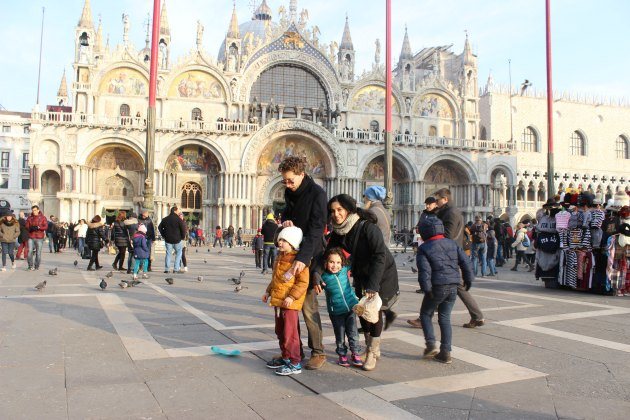We already suggested in some previous articles to visit the Squero of San Trovaso if you are in the area of Dorsoduro during your stay, in particular if you are traveling with your children. This was a construction yard to build and repair the typical venetian boats and it is still possible today to visit it and have a close look at a gondola!
But where does this beautiful and peculiar Venetian mode of transportation come from?
How old is the name that is nowadays well-known worldwide? It seems it may derive from the Latin word ‘cymbula’, which means ‘little boat’. One fact is sure though: the first proof of the use of this word was found in 1094 in an ancient document signed by the Doge himself.

Musement.com
Here are 5 facts you DIDN’T KNOW about GONDOLAS:
– The gondola is not perfectly symmetrical; this is necessary to balance the weight of the gondolier who rows standing on the side of it.
– The gondola is composed of about 280 pieces of different types of wood – among them: lime wood, oak, elm, beechwood, mahogany, cedar tree, and so on…
– Up until 1562, gondolas had sumptuous, colourful decorations. From that year on, an official decree established that the only colour that could be used for gondolas is black! This decision was made to create style uniformity: can you imagine the competitions amongst nobles to have the most lavish decorations?
– Originally, gondolas were covered by a cabin: there is evidence of it in many ancient paintings, such as this one from Canaletto on 1732 titled “Veduta dell’ingresso dell’Arsenale” (View from the entrance of the Arsenal).
– The bow of the gondola is decorated with a very important and meaningful element: the six horizontal teeth represent the six Sestrieri (districts) of the city; while the top part represents the typical hat worn by the Doge (the Doges’ horn); finally, the central part represents the Giudecca Canal.
… and now it is your turn! Have fun cutting and decorating this model of a gondola… waiting to try a real one!

homeschoolingmom2mags.blogspot.com_.jpg
Bibliography: Alberto Toso Fei, Veneziaenigma, Elzeviro, Treviso 2004.




